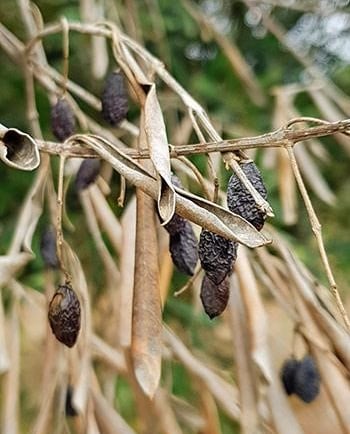What are the solutions against Xylella fastidiosa bacteria?
Description de l'article de blog :
1/20/20252 min read


Xylella fastidiosa, a highly aggressive pathogenic bacterium, poses a major threat to agriculture and horticulture. Capable of infecting more than 400 plant species, it is characterized by its lack of curative treatment and rapid spread. Now present in France, this bacterium mobilizes researchers and agricultural professionals to try to contain its damage and preserve ecosystems.
Table of contents:
What is Xylella fastidiosa?
Distribution of the bacterium
Which plants are affected?
How are plants infected?
What are the symptoms and damage caused by Xylella fastidiosa bacteria?
Regulations and prevention measures
Monitoring and control of Xylella fastidiosa
What is Xylella fastidiosa? Xylella fastidiosa is a bacterium that settles in the conductive vessels of the sap, called xylem. It spreads through piercing-sucking insects (leafhoppers) that feed on raw sap. Once installed, it obstructs these vessels, disrupting the plant's water and nutrient supply. The consequences range from wilting to the death of the host.
Distribution of the bacterium Originally from the American continents (North and South), Xylella fastidiosa has spread to other regions of the world, including Asia and Europe. On the old continent, it was first observed in Puglia, Italy, in 2013 (where it has since caused the destruction of thousands of olive trees), before being detected in Spain, Portugal, Germany, Belgium and the Netherlands.
Which plants are affected? Xylella fastidiosa is a threat to an impressive number of plants. More than 400 species are listed as susceptible to this bacterium. It affects both agricultural crops and ornamental plants or wild species.
How are plants infected? The transmission of Xylella fastidiosa is through piercing-sucking insects (more than 50 are listed) that feed on sap. These insects carry the bacterium from an infected plant to a healthy one, acting as true vectors.
What are the symptoms and damage caused by Xylella fastidiosa bacteria? The symptoms caused by Xylella fastidiosa can vary widely depending on the plant affected and the subspecies of the bacterium responsible. Some infected plants show no visible signs (they are said to be asymptomatic), but they remain carriers of the disease and increase the risk of spread. Others, on the other hand, suffer severe damage, sometimes fatal.
Regulations and prevention measures Faced with this threat, Xylella fastidiosa is classified as a quarantine organism within the European Union. This classification imposes increased vigilance on the part of authorities and professionals.
Monitoring and control of Xylella fastidiosa The fight against Xylella fastidiosa relies on a rigorous and multidimensional approach. The rapid identification of infection foci is essential to limit its dispersion. Infected plants are uprooted and destroyed to reduce contamination reservoirs.
Roots and Soils SOLUTIONS
Natural solutions to fight against pests (leafhoppers) that are vectors of the disease against Xylella fastidiosa.
Solutions to activate the plant's defense system.
Active ingredients and specific to the biostimulants formulated in France to counter pests and diseases.
Photo: An olive tree infected with Xylella fastidiosa showing symptoms of dieback. Photo by Dr Steven White
